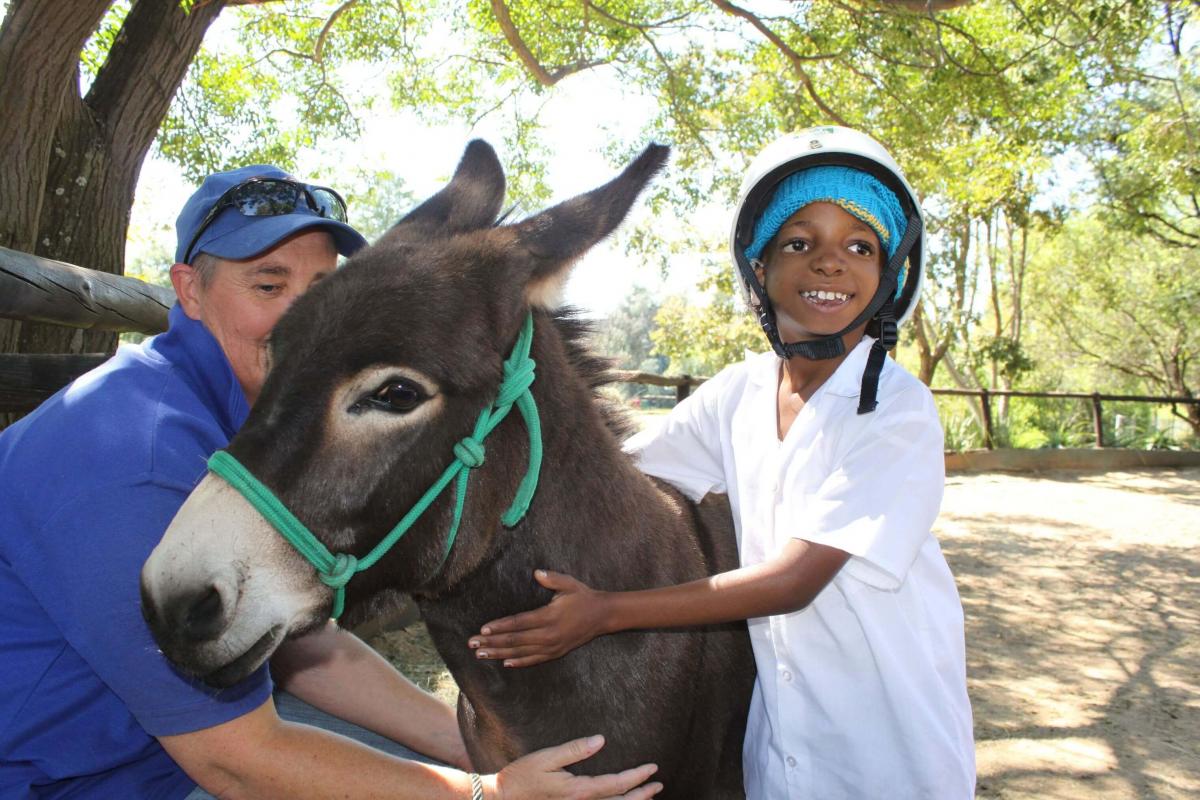 The boy’s lopsided but enormous smile is so infectious that I laugh as he rides past.
The boy’s lopsided but enormous smile is so infectious that I laugh as he rides past.
He’s a tiny little thing, sitting astride a pony and wobbling in the saddle like a rag doll while two elderly volunteers keep a steadying hand on his spindly legs. A third volunteer is leading the placid pony and the kid is clutching a beanbag. He’s supposed to pass the bag to one of his helpers to strengthen his coordination skills, but he’s sucking it instead.
When riding instructor Wihan Ras lifts him down 20 minutes later, he has to prise the autistic boy’s fingers off the pony’s mane. The pony, thankfully, is unperturbed, used to the ungainly movements of his riders and happy to accept some clumsy pats the boy plops on his nose.
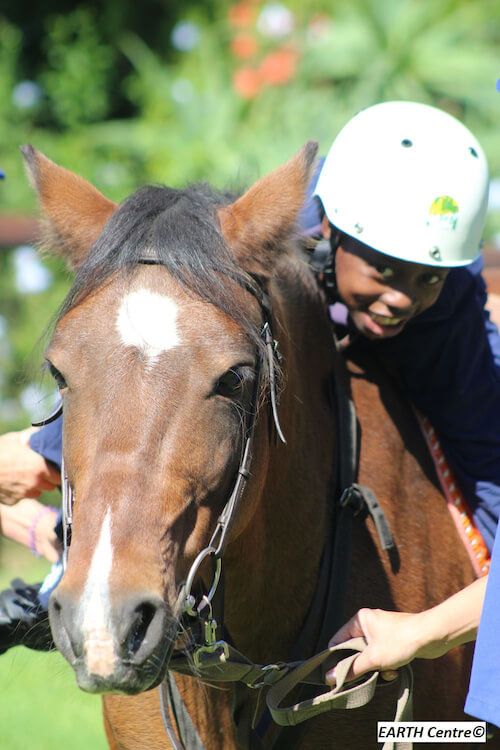 I’m watching some disabled children enjoy ‘equine therapy’, with benefits that run far deeper than just letting them have fun. Although when you see their joy, that feels like a good enough reason by itself. The benefits keep happening long after their weekly ride: under-developed muscles are activated, spasms relax, and a sense of accomplishment and self-esteem start stirring in their brains.
I’m watching some disabled children enjoy ‘equine therapy’, with benefits that run far deeper than just letting them have fun. Although when you see their joy, that feels like a good enough reason by itself. The benefits keep happening long after their weekly ride: under-developed muscles are activated, spasms relax, and a sense of accomplishment and self-esteem start stirring in their brains.
“Horse riding is a unique opportunity for children with disabilities," says Nicole Christie of the EARTH Centre in Gauteng. "In this setting therapy is fun and confidence building; it teaches them relational and social skills and improves overall cognitive function. Many of these children will face discrimination throughout their lives, so being part of this programme increases their participation in society and helps them to integrate more effectively into their communities. ”
Kids from 11 special needs schools as well as private patients attend EARTH Centre’s free therapy sessions, with disabilities including cerebral palsy, Down syndrome, foetal alcohol syndrome, spina bifida or various intellectual disabilities. Others are blind or deaf, but all can benefit from the physical and emotional therapy of riding.
The warmth of the pony relaxes spastic muscles, then stimulates and strengthens their core muscles, Nicole explains. “A horse’s gait is 3D and mimics the movements of the human pelvis whilst walking: forward and backward, side to side, and up and down. So children confined to a wheelchair, a walker or crutches who can’t move freely get their movement from the pony.”
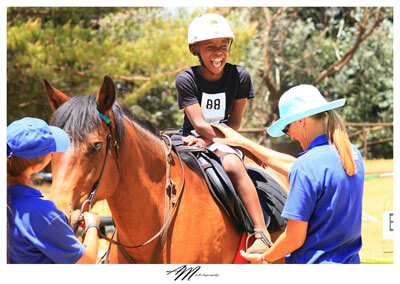 The pony not only becomes the legs of a child who is unable to walk, it also becomes a friend to the socially inept, and a highlight for some kids whose lives must be pretty bleak.
The pony not only becomes the legs of a child who is unable to walk, it also becomes a friend to the socially inept, and a highlight for some kids whose lives must be pretty bleak.
The centre's sponsor liaison officer, Julia Morris, explains the exercises they're trying to do as they ride, like steering the pony towards a drum, or picking up something with their right hand and transferring it to their left. “Kids with autism really struggle with those processes so it promotes concentration, patience and balance. When they get off they might be quite tired, not only in their muscles but also in their minds, because they have to listen and concentrate and focus.” She watches them with obvious affection. “Look at them, they’re gorgeous. It’s so rewarding,” she says.
Most of the children come from disadvantaged backgrounds and some are initially terrified of these big animals. “It’s a leap of faith or may take some coaxing and patience on the instructor’s part, but they grin from ear to ear once they’re on because they’re doing something fun.”
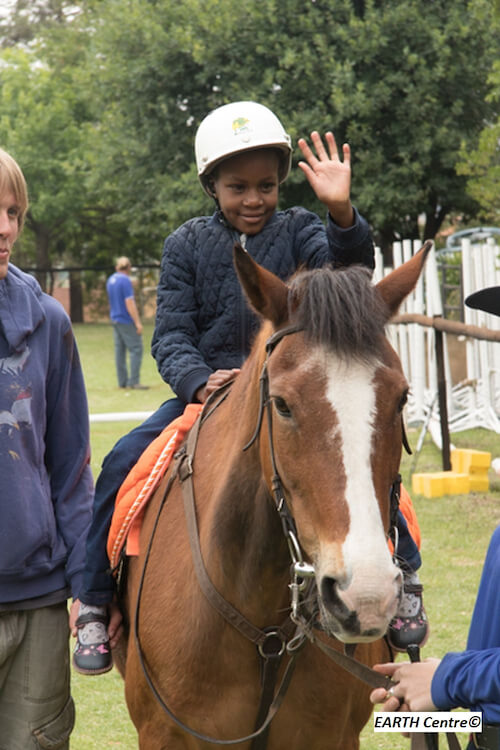 The parents and teachers say the children become far more relaxed and able to concentrate and sleep better at night. “One of the children from St Vincent’s School for the Deaf hadn’t uttered a word, and after his first few riding lessons he was able to speak his first word. One can’t always predict the positive outcomes you may see with the riding. It unlocks all kinds of things,” Nicole says.
The parents and teachers say the children become far more relaxed and able to concentrate and sleep better at night. “One of the children from St Vincent’s School for the Deaf hadn’t uttered a word, and after his first few riding lessons he was able to speak his first word. One can’t always predict the positive outcomes you may see with the riding. It unlocks all kinds of things,” Nicole says.
Orrah Mahlangu’s son Silo has been riding for a few months and adores it. It’s an exciting outing for a bright boy whose cerebral palsied body stopped developing years ago. “He has no use of his arms and legs but he’s very intelligent,” she says. “He’s got the brain of a 15-year-old but the body of a two year old.”
The Mahlangus were on the waiting list for three years before Silo got his chance. While he enjoys the thrill of the weekly ride, his mum is delighted with how it’s helping his posture and social skills as he meets different people. She's also seeing some intellectual improvements.
There are 165 children who ride weekly on the centre's 17 ponies and two miniature donkeys, but only six qualified instructors, some of whom are not paid for their time. They also need more volunteers to walk alongside the children. And more funding too, since it costs R26,000 a year to care for each ‘equine therapist’ and R2.6 million a year for the centre to operate.
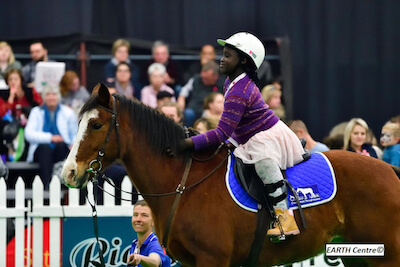 Wihan, the senior instructor, carefully assesses each child to match them with a pony whose temperament, build and movement will provide the maximum therapeutic benefit for their specific disability. “We see more results with the physically disabled because some have very tight spastic muscles so our ponies can release the muscles and build the core. It improves their posture so they can carry themselves better. For a quadriplegic, holding his own cup and drinking out of it without assistance is a big achievement in daily life,” he says.
Wihan, the senior instructor, carefully assesses each child to match them with a pony whose temperament, build and movement will provide the maximum therapeutic benefit for their specific disability. “We see more results with the physically disabled because some have very tight spastic muscles so our ponies can release the muscles and build the core. It improves their posture so they can carry themselves better. For a quadriplegic, holding his own cup and drinking out of it without assistance is a big achievement in daily life,” he says.
Julia has been involved for 19 years and remembers one little girl with a rare genetic disorder who couldn’t walk. “After she rode for a couple of years the mum said ‘you have to see this’ and the girl took her first faltering steps. We were all in tears. That’s why the schools and the parents keep bringing them back.”
* To volunteer, donate or request riding therapy, call 011 958 5044, email info@earthcentre.org.za or see http://earthcentre.org.za/